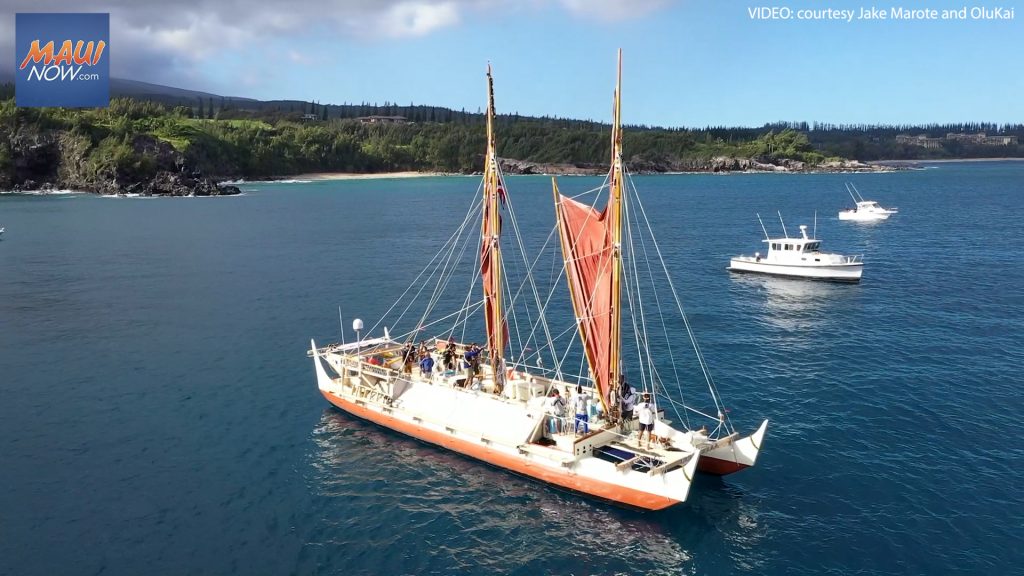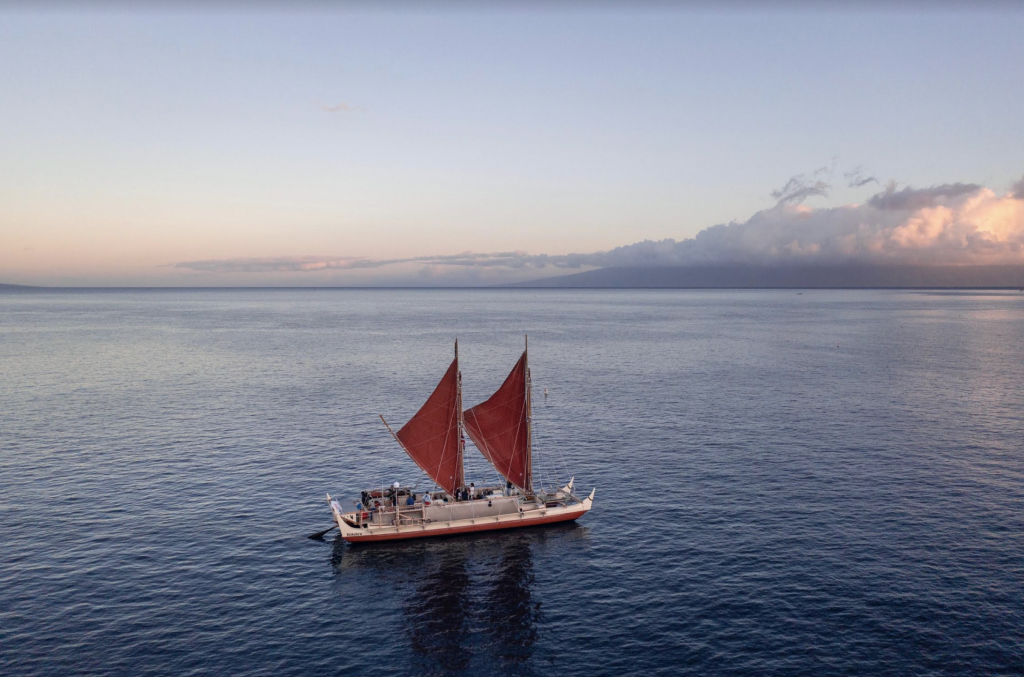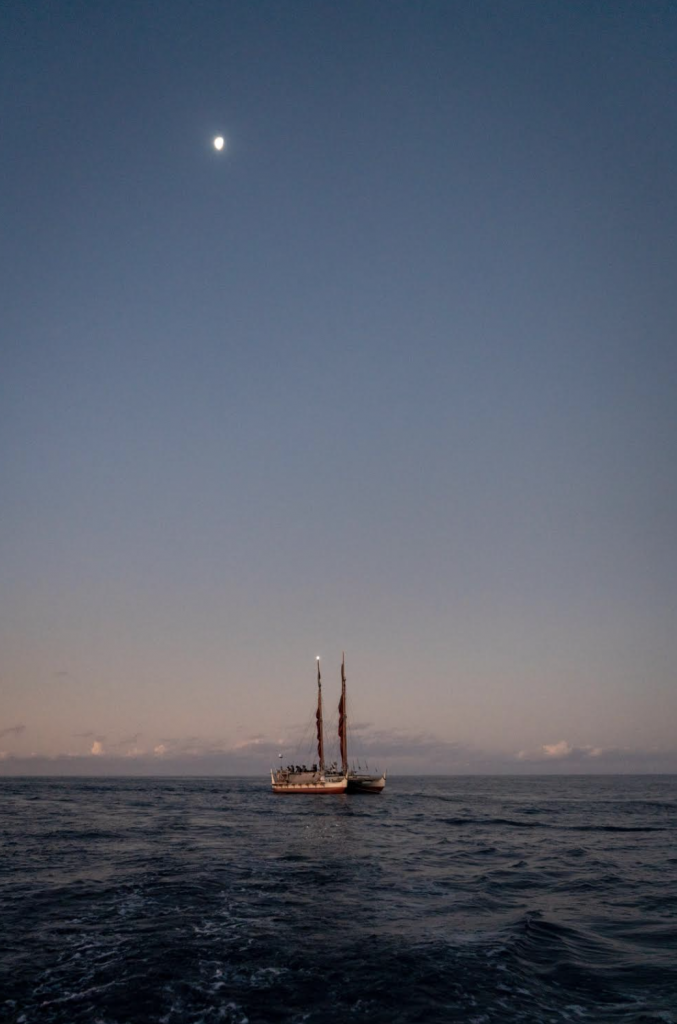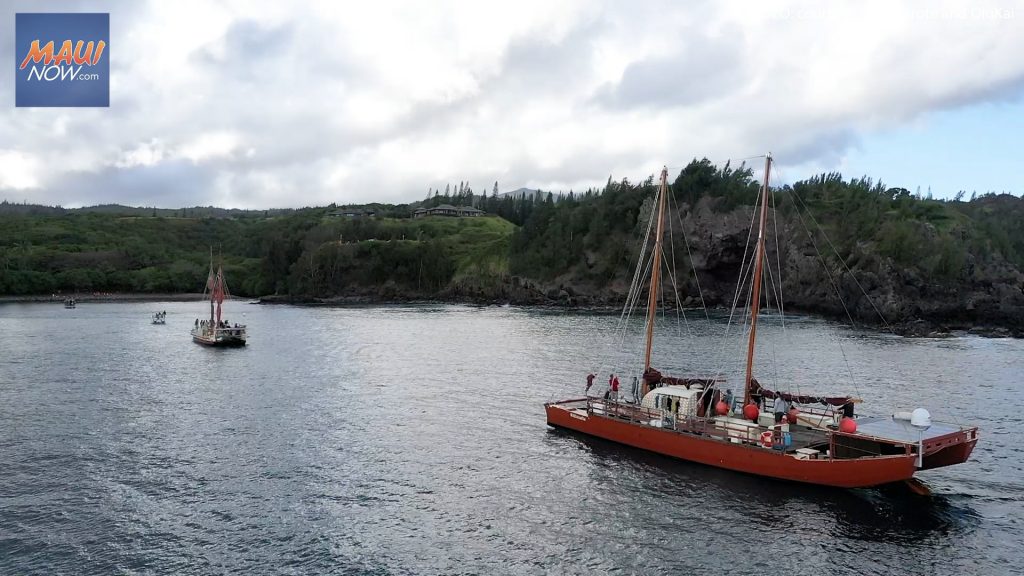Hōkūleʻa and Hikianalia Sail to Honolua Bay, Maui for 45th Anniversary Event
The Polynesian sailing canoes, Hōkūleʻa and Hikianalia sailed to Honolua Bay on Maui yesterday, marking the 45th anniversary of Hōkūleʻa’s maiden voyage to Tahiti. Saturday’s event honored Mau Piailug, the 1976 Crew and Pwo Navigator Kālepa Baybayan.
May 1, 2021 marked 45 years since the voyaging canoe Hōkūleʻa departed Honolua Bay, Maui for her maiden voyage to Tahiti. It was the first time in more than 600 years a Polynesian voyaging canoe sailed down Kealaikahiki, the ancestral sea road connecting Hawaiʻi and Tahiti, using traditional navigation.

It was also the day that Micronesian navigator Mau Piailug began giving to Hawai’i the gift of ancestral non-instrument navigation – the knowledge of wayfinding that had been lost in Hawai’i for hundreds of years. In celebration of this historic day, Hōkūleʻa and Hikianalia sailed from Oʻahu and arrived at Honolua Bay this morning to remember and honor the voyaging visionaries, Mau Piailug and the 1976 crew members who courageously took risks and in doing so reawakened a lost tradition and helped to restore pride and dignity to Native Hawaiians.
The crew also honored Pwo Navigator Kālepa Baybayan, who passed away last month, by sailing past his family’s home near Lahaina. On May 1, 1976, Baybayan was a young man who quietly helped to paddle crew members from the shore of Honolua Bay to Hōkūleʻa for departure. It was a day that helped ignite his passion for the canoe, voyaging, navigation and ultimately a life dedicated to the Hawaiian culture and language.
The Hokule’a crew members on the 1976 voyage from Hawaiʻi to Tahiti included Clifford Ah Mow, Shorty Bertelmann, Ben Finney, Tommy Holmes, Sam Kalalau, Boogie Kalama, Kawika Kapahulehua, Buffalo Keaulana, John Kruse, Dukie Kuahulu, David Lewis, Dave Lyman, Billy Richards, Rodo Williams and master navigator Mau Piailug who used nature’s clues – wind, waves, stars, birds, clouds – to find their way to Tahiti, despite never having sailed the Southern Hemisphere .
There were also two “National Geographic” documentarians on board: photographer Nicholas DeVore and filmmaker Dale Bell. Four of the original crew members are still living and active in the voyaging community including Bertelmann, Keaulana, Kruse and Richards. Filmmaker Dale Bell is also still living.
The majority of crew members on board Hokule’a and Hikianalia are the youngest generation of voyagers, able to stand on the shoulders of the great voyagers before them. This morning at Honolua Bay, they and the veterans including Pwo Navigators Bruce Blankenfeld and Nainoa Thompson, reflected on the impact of Hōkūleʻa’s legacy over the last 45 years. They envisioned what the world will be like when the canoes return to Honolua Bay upon the completion of the Moananuiākea Voyage.
This Honolua Bay sail is one of a series of training sails to prepare the crew for the 41,000-mile, 42-month circumnavigation of the Pacific that will cover 46 countries and archipelagoes, nearly 100 indigenous territories and 345 ports. Focused on the vital importance of oceans, nature and indigenous knowledge, the goal of the Moananuiākea Voyage is to develop young crew members, navigators and leaders for the planet.
“A year from today, May 1, 2022, we will launch the Moananuiākea Voyage and in five years from today we will return here to Honolua Bay to mark 50 years of Hōkūleʻa and voyaging,” said Nainoa Thompson, president of Polynesian Voyaging Society. “We believe the world needs navigators, and we are laying down that challenge now, that in five years when we return to Honolua Bay, we will have inspired and elevated 10 million navigators and young leaders of all kinds to lead our earth into a sustainable, thriving future.”
On the way back to Honolulu, Hōkūleʻa and Hikianalia sailed by Kalaupapa, Moloka’i to remember, pay respect and aloha the community that welcomed the crew that brought Hōkūleʻa home from Tahiti in 1976. As Thompson recounts, the Hōkūleʻa crew was told to hold-off and not return to O’ahu yet as preparations to celebrate their arrival were not completed, so the decision was made to wait off of Kalaupapa for safe anchorage, away from big crowds. He says “The crew didn’t go ashore, but the Kalaupapa patients crowded into a row boat with their ukulele and went out to Hōkūleʻa, climbed on board and they were joyously singing on the canoe.”























